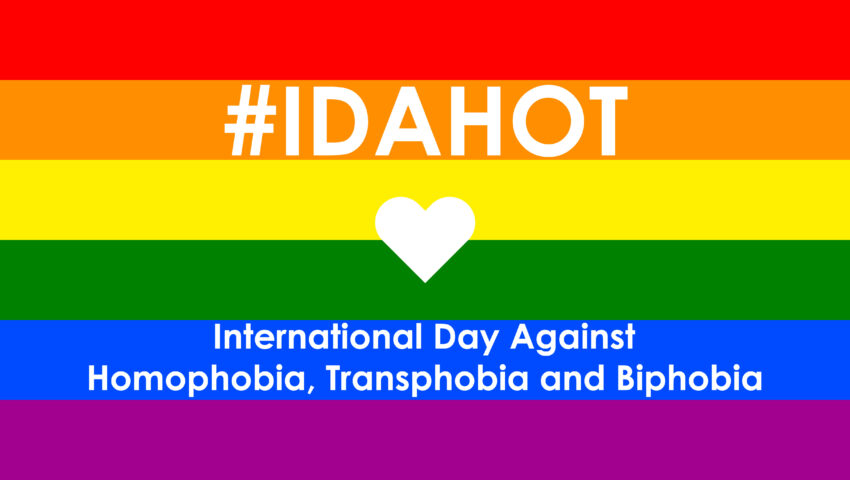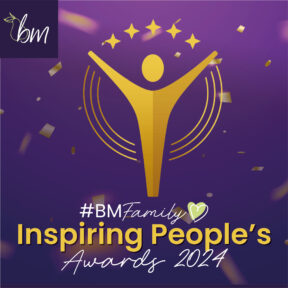Blogs
What is IDAHOBIT

Today is International Day Against Homophobia, Biphobia and Transphobia (IDAHOBIT). First observed in 2004, IDAHOBIT raises awareness of discrimination and violence against the LGBTQ+ community. Used to drive positive change, this day can offer a safe and inclusive space for everyone.
“That’s gay”
I am shocked when I hear this. I thought we had left this in the playground. I force myself to say, ‘That’s homophobic’, but I feel anxious about the response. Often casually dropped, this statement is detrimental. Stating that things perceived as negative as “gay” it’s harmful. It reaffirms the belief that cis-gender and heterosexuality are the only ‘good’ options.
Such statements are often made without malice and come from a place of ignorance. Without ‘calling someone out’ when comments like this are made, we are affirming these statements are okay. Of course, they are not. Everyone should feel able to be who they are, and yet it’s 2023, and discrimination persists.
The Pink News reports that in 2020, homophobic hate attacks in London rose by 22%
A sobering reminder that there is a long way to go before the LGBTQ+ community is safe and free from harm. We all deserve to live as our authentic selves and to be free of violence. Yet it is prejudice of the LGBTQ+ community, which causes them to live in fear. Let that statement sit. ‘Phobia’ is the reason why the community fears for their lives. Defined as irrational fear, the term ‘phobia’ is the dislike of someone or something. It is based on prejudice and discrimination.
As a company, we have taken leaps and bounds towards inclusivity. But part of that journey is recognising how we can improve. Understanding why and what we fear can help us challenge our beliefs. We can look further into our understanding of what homophobia is. This can be a powerful tool for promoting inclusivity so let’s begin.
What is homophobia, biphobia and transphobia (IDAHOBIT)
It is the dislike of gay, bi and transgender people.
Queen Mary, University of London expands on this and states it is the “dislike or fear of something based on prejudice or negative attitudes, beliefs or views, about someone thought to be lesbian, gay, queer, transgender or bisexual”. Homophobia, biphobia and transphobia and can be verbal, written, in-person or virtual.
What can homophobia look like?
- Commenting “that’s so gay” or “don’t worry, I am not gay” are homophobic. Despite the light-hearted delivery, these comments are not okay. They are harmful and imply that a person, action or thing perceived to be negative is somehow ‘gay’.
- Suggesting that LGBTQ+ people are sexually deviant or dangerous due to their sexual orientation.
- “You don’t look gay” suggests you can tell someone’s sexual orientation by their appearance. These comments reinforce harmful stereotypes.
- Assuming someone is in a heterosexual relationship
What can transphobia look like?
- Deliberately or repeatedly misgendering someone. For example, a colleague states their pronouns are they/them, but you use he/him when referring to their gender.
- Refusing a transperson access to services or facilities appropriate for their gender identity. Not letting a trans-man use the men’s bathroom.
- Suggesting a trans-woman/man is not a ‘real’ woman/man
- “You don’t look trans” – this comment suggests that being trans is shameful and the ideal goal is to not look trans.
What can biphobia look like?
- Statements like “You’re greedy” reinforce damaging stereotypes
- “It’s a phase” is dismissive and invalidates someone’s experiences and/or feelings about their own sexuality and identity
- “You need to make your mind up” invalidates bisexuality as a sexual orientation
- “You can’t be queer/bi as you haven’t dated someone of X gender”. This assumes that someone’s sexuality is based on the gender of the person they are dating.
5 Tips on how to encourage inclusivity
- Listen to the LGBTQA+ community. Listening means taking an active role in hearing what someone has to say. Action can be taken on issues which might affect someone who is trans, bi, queer, gay, or lesbian. Introducing gender-neutral/all-gender bathrooms could, for example.
- State your own pronouns. Be a forward thinker and create a safe space. Share your pronouns first. This offers acceptance and encourages others to share theirs.
- Use more gender-inclusive language – instead of “Hi, guys!”, try “Hi, team” or “Hi everyone”
- Accept that if you do not understand an identity, it is still real. If someone states their identity their identity is real and valid
- Recognise that being transgender, lesbian, queer, gay or bi is not about how someone looks. It is someone’s truth and who they are.
Creating an inclusive culture can present personal challenges, and we may feel uncomfortable. Being aware of our language and behavioural subtleties can break down our beliefs. We need look inward and stand up to call our colleagues and loved ones. But inclusivity should be everyone’s reality. Everyone deserves to live free from harm and as their authentic selves.
Check Stonewall to find out more about IDAHOBIT and how to be inclusive.
If you require further support, please get in touch with Dorrianne Casey at [email protected]




